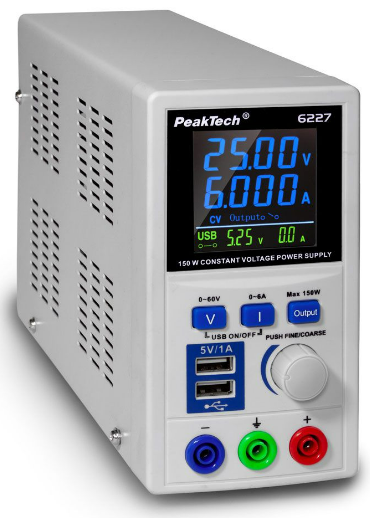Why Is It Advantageous for Switching Power Supplies to Operate At High Frequencies?

In this article, we explain why switching power supplies operate at such high frequencies and why it's advantageous for them to do so.
A switching power supply operating at high frequencies provide benefits, but it also provides certain drawbacks.
The first thing is, why be concerned at all by them operating at high frequencies?
Why be concerned with the trend that switching power supplies are going to ever-increasing switching frequencies?
The reason why high frequencies are problematic is because the higher the frequency that a switching power supply operates at, the more EMI that is created and the greater the switching losses. Switching losses is an all-encompassing term that occur at the moment we actually switch the transistor (from ON to OFF or from OFF to ON). No switching is perfectly efficient and all switches result in energy loss in form of some energy being dissipated; this occurs in the transition period from fully on to fully off and from fully off to fully on. Of course, in reality transistors are still physical, mechanical components that create some energy losses during the transition from ON to OFF and OFF to ON. Thus, the higher the switching frequency, the greater the energy losses.
However, nonetheless, it is advantageous for several reasons to increase the frequency of a switching power supply.
The first reason switching power supplies operate at high frequencies to make them noiseless to human beings.
Human beings can hear frequencies between 20Hz up to 20KHz.
If switching power supplies operated in these ranges, yes, there would be benefits, including less EMI created and switching losses. However, the noise would be horrible, kind of like a person turning on a noisy generator.
What creates this noise are the reactive components- the capacitors and inductors. Reactive components are prone to creating sound pressure waves. Early LC-based switching power supplies switching below 20kHz were audible to humans.
To eliminate this audible noise to humans, we simply operate the switching mode power supply above the 20KHz range.
Besides noise, another reason, the more important reason to a large degree, to increase the frequency of a switching power supply is to make the device smaller.
How does this happen?
The bulkiest component a switching power supply is the inductor. Increasing the switching frequency came with the realization that the inductor could be proportionately reduced in size to the frequency. That is, if we increase the frequency, we can proportionately decrease the size of the inductor, which comes with decreased product size and lower cost.
You can see this by the formula for the reactance of an inductor, which is, XL= 2πfL.
So you can see based on this formula, there is a direct relationship between the frequency we use and the reactance the inductor offers in response. The higher the frequency that the switching power supply uses, the higher the reactance. There is also a direct relationship between the reactance and the size of the inductance of the inductor. Thus, if we increase the frequency, we can decrease the inductor value.
So, if we increase the frequency, the reactance increases. Thus, we can decrease the value of the inductor to give us the same effect.
For example, for every tenfold you increase the frequency, you can decrease the inductance tenfold to give the same reactance value.
This can be shown below.
Let's say we're working with a frequency of 1Hz and 1H.
This produces a reactance of, XL= 2πfL= 2(3.14)(1Hz)(1H)= 6.28Ω
Now let's increase the frequency tenfold while keeping the inductance at the same value. This gives us, XL= 2πfL= 2(3.14)(10Hz)(1H)= 62.8Ω
To give us the same reactance value of 6.28Ω that we originally had, we wouldn't need a 1H inductor. Instead, we can decrease the inductor tenfold to 0.1H or 100mH.
This is demonstrated by the following math, XL= 2πfL= 2(3.14)(10Hz)(0.1H)= 6.28Ω
So if we increase the frequency 100 times, we decrease the inductance 100 times to get an equal reactance value.
If we increase the frequency 1000 times, we decrease the inductance 1000 times to get an equal reactance value and etc.
If we work with high enough frequencies, we can work with inductors of values of just a few microhenries (µH).
This significantly reduces the size of the inductor.
This is the reason why successive generations of power supplies keep increasing in frequency. They have gone from 20kHz, 50kHz, 70kHz, 100kHz, 150kHz, 250kHz, 300kHz, 500kHz, 1 MHz, 2 MHz, and often even higher.
This serves to help reduce the size of the conducted EMI and input/output filtering components,
which switch power supplies need to function well. This includes the size of capacitors as well.
Related Resources
